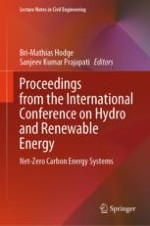2024 | OriginalPaper | Buchkapitel
Performance Evaluation of an Undershot Water Wheel Turbine Using CFD
verfasst von : Prashanth Kumar Sanjeevaiah, Ramesh Kumar Donga, Ashish Karn
Erschienen in: Proceedings from the International Conference on Hydro and Renewable Energy
Verlag: Springer Nature Singapore
Aktivieren Sie unsere intelligente Suche, um passende Fachinhalte oder Patente zu finden.
Wählen Sie Textabschnitte aus um mit Künstlicher Intelligenz passenden Patente zu finden. powered by
Markieren Sie Textabschnitte, um KI-gestützt weitere passende Inhalte zu finden. powered by
